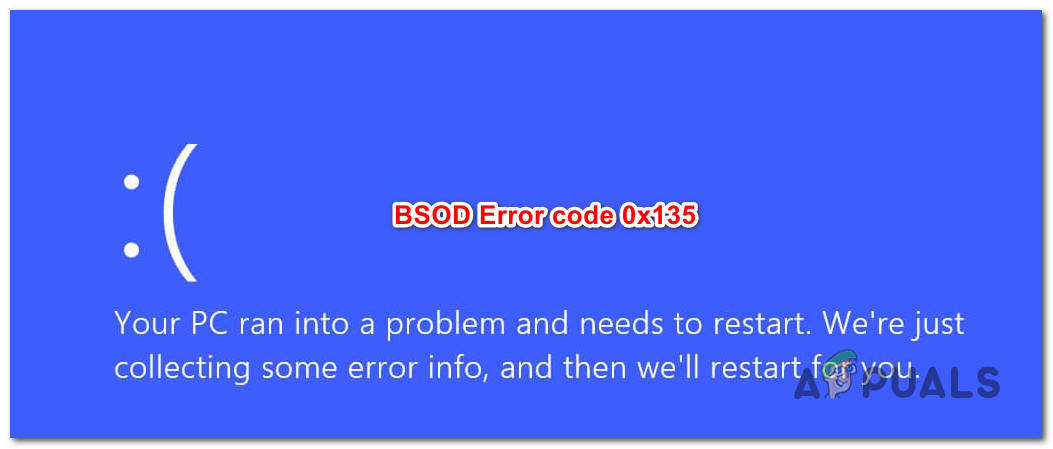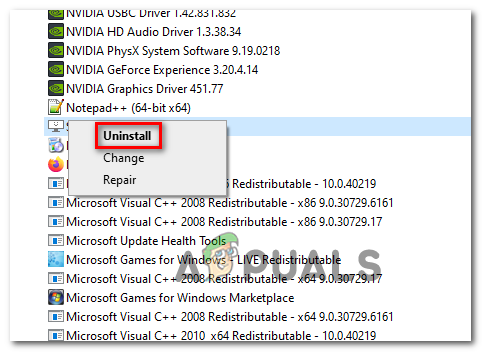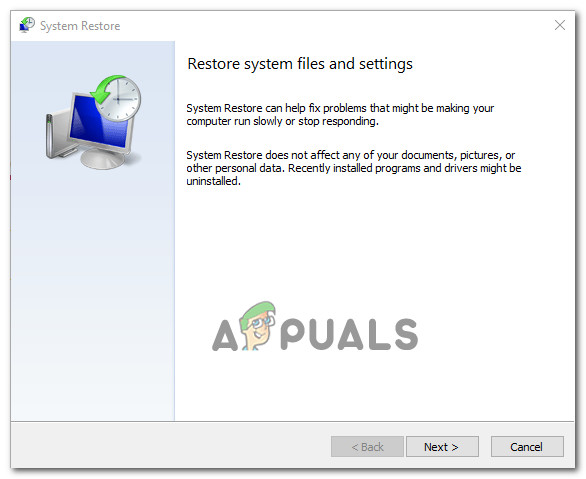How to Fix BSOD with Error Code 0x135 on Windows 10
Some Windows 10 users are getting frequent BSOD (Blue screen of Death) critical errors with the 0x135 error code at seemingly random intervals. As it turns out, this issue seems to be exclusive to Windows 10.

As it turns out, there are several different causes that might contribute to the apparition of this critical error. Here’s a shortlist of potential culprits that are known to cause this behavior on Windows10:
- Conflicting software – As it turns out, there are a couple of conflicting 3rd party tools (Dragon Center and Webroot) that are confirmed to cause this error code. If this scenario is applicable, you can prevent their problematic files (WRkrn.sys and DCv2.exe) from crashing the system by uninstalling their parent application altogether. If you’re dealing with a different software conflict, the easiest way to get rid of the issue is to use the System Restore utility to return your computer back to a healthy state.
- Corrupted Boot Configuration Data – If you’re encountering this BSOD crash at every attempted startup, chances are the issue is caused by some type of corruption among your BCD data. In this case, you’ll be able to fix the problem by booting in the recovery menu and rebuilding the BCD data from an elevated CMD prompt.
- System File Corruption – According to some affected users, this BSOD crash can also occur due to some underlying corruption issues. If this scenario is applicable you can fix the problem either by performing a clean install or going for a repair install (in-place repair) procedure.
Method 1: Uninstalling Conflicting Software (if applicable)
As it turns out, there are a couple of problematic 3rd party applications that are known to conflict with some crucial Kernel processes and cause this error code.
Several affected users have managed to fix the problem by uninstalling Webroot and Dragon Center – These applications use 2 files (WRkrn.sys and DCv2.exe) that might cause your WIndows application to become unstable.
If this scenario is applicable and you’re actively using these programs on your computer, you should be able to prevent any new instances of this critical 0x135 BSOD by uninstalling the parent applications that facilitate this conflict.
If you’re not sure how to do this, just follow the instructions below:
- Press Windows key + R to open up a Run dialog box. Next, type ‘appwiz.cpl’ and press Enter to open up up the Programs and Features menu.

Type appwiz.cpl and Press Enter To Open Installed Programs Page - When you’re inside the Programs and Features menu, scroll down through the list of installed programs and locate the conflicting program (Webroot or Dragon Center).
- When you manage to locate the problematic suite, right-click on it and choose Uninstall from the newly appeared context menu.

Uninstalling the conflicting software - Inside the uninstallation screen, follow the on-screen prompts to complete the process, then restart your computer.
- After your computer boots back up, use your computer normally and see if the 0x135 error code is still occurring.
If the problem is still not fixed, move down to the next potential fix below.
Method 2: Rebuilding the BCD data
Another potential culprit that might trigger this type of behavior is a problem with the Boot Configuration Data – This is even more likely if you’re encountering the BSOD crash during the startup sequence.
Fortunately, this problem can usually be resolved by taking the appropriate steps to rebuild the Boot Configuration Data with a series of CMD commands (ran from an elevated terminal).
To rebuild the BCD data on your Windows computer, follow the instructions below:
Note: The instructions below assume that you can’t get past the booting sequence. If you are able to, you can run the commands below from an elevated CMD window.
- Insert a compatible installation media on you’re computer and press any key immediately after you start your computer to boot from the Windows installation media.

Press any key to boot from installation media - Once you get to the first window, click on Repair your computer.

Click Repair your computer on Windows Screen Note: If you don’t have an installation media at the ready, you can also force your system to boot itself into the repair menu by forcing 2 unexpected shutdowns in the middle of the startup procedure.
- Once you’re finally inside the repair (recovery) menu, click on Troubleshoot, then click on Command Prompt from the list of available options.

Troubleshoot - Once you successfully manage to open an elevated Command prompt, type the following command and press Enter to rebuild the Boot Configuration data:
Bootrec /RebuildBcd
- Wait until the operation is completed, then reboot your system normally and see if the problem is fixed at the next computer startup.
If you’re still dealing with the same kind of BSOD even after refreshing your Boot Configuration Data, move down to the next potential fix below.
Method 3: Using System Restore
If the problem only started occurring recently, there’a high chance that a recent software change caused this type of instability that ends with the 0x135 error code. And since it can be hard to pinpoint the culprit, the best thing you can do is revert your computer to a state in which this BSOD was not occurring.
Several affected users have managed to fix the problem by using System Restore to revert their machine back to a healthy state. System Restore is a built-in utility that comes enabled by default on your Windows 10 computer.
If you want to give this method a try, follow the instructions below to use the System Restore wizard to use a restore snapshot to circumvent the apparition of the 0x135 error code:
- Open up a Run dialog box by pressing Windows key + R. Next, type ‘rstrui’ and press Enter to open up the System Restore wizard.

Opening the System Restore wizard via Run box - Once you arrive at the first System Restore screen, press Next to advance to the configuration menu.

Getting past the initial screen of System Restore - Once you get to the next screen, start by checking the box associated with Show more restore points. Next, go ahead and select a system restore snapshot that’s dated before you started experiencing this type of BSOD.

Restoring your system to a previous point in time Note: Keep in mind that once you enforce this method, every little change you made since that restore snapshot was created will be lost – This included installed apps, user preferences, and any downloaded files. Essentially, your computer will be restored to the exact state it was when the restore snapshot was created.
- Click on Finish, then click Yes at the confirmation prompt to start the restore process. Soon enough, your computer will restart and the old computer state will be enforced at the next startup.

Starting the System Restore process - Once your computer boots back up, use your computer normally and see if the 0x135 error is now fixed.
If the same problem is still occurring, move down to the next potential fix below.
Method 4: Refreshing every Windows component
If none of the methods above have worked for you, it’s very likely that you’re encountering this problem due to some kind of underlying system file corruption that you will not be able to fix conventionally.
If this scenario is applicable, the most effective way of getting this issue resolved is to reset every file related to your Windows 10 installation. When it comes to doing this, you have a couple of options:
- Clean install – This is the easiest procedure out of the bunch as you don’t need compatible installation media. This procedure can be initiated directly from the GUI menu of your Windows 10 computer. However, one major drawback is that unless you back up your data in advance, you will effectively lose any personal data that is currently stored on the OS drive.
- Repair install (In-place Repair) – This is the focused approach since it allows you to refresh your OS files without touching your personal files, apps, games, media, and even user preferences. However, to initiate this procedure, you’ll need a compatible installation media.





